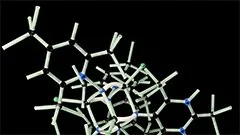Introduction
Animal transgenesis refers to the process of altering an organism's genome by exogenous DNA introduction to produce a transgenic animal. This technique, which falls under the umbrella of genetic engineering, has revolutionized biological research and practical applications in agriculture, medicine, and biotechnology.
Historical Background
The concept of genetic manipulation dates back to the 1950s when Joshua Lederberg and Edward Tatum proposed the idea of "genetic recombination." However, it was not until 1980 that the first transgenic mammal, a mouse, was created by P.G. Cohen and J.A. Melton. The subsequent years witnessed significant advancements in animal transgenesis techniques for various species, including fish, birds, and non-human primates.
Techniques of Animal Transgenesis
The most common methods used for creating transgenic animals include microinjection, electroporation, viral vectors, and gene editing tools such as zinc finger nucleases (ZFNs), transcription activator-like effector nucleases (TALENs), and clustered regularly interspaced short palindromic repeats (CRISPR)-associated protein 9 (Cas9).
Microinjection
Microinjection is the earliest and most straightforward method of introducing exogenous DNA into embryos. This technique involves the injection of DNA directly into the pronucleus or cytoplasm of a fertilized egg using a fine glass pipette. Although labor-intensive, microinjection has been used to produce transgenic animals for various species.
Electroporation
Electroporation is another method that employs an electric pulse to temporarily permeabilize the cell membrane, allowing DNA to enter the cell more efficiently. This technique can be applied either in vivo (directly into embryos) or in vitro (on cultured cells). Electroporation has advantages over microinjection, such as reduced labor and improved efficacy.
Viral Vectors
Viral vectors are genetically engineered viruses that can deliver exogenous DNA to cells efficiently. Retroviruses, adenoviruses, and lentiviruses are common examples of viral vectors used in animal transgenesis. These vectors offer several advantages over other methods, such as high efficiency, the ability to integrate into the host genome, and long-term expression of the introduced gene.
Gene Editing Tools
Gene editing tools like ZFNs, TALENs, and CRISPR/Cas9 allow for precise modification of the genome by inducing double-strand breaks at specific locations. The resulting DNA repair process can lead to insertions, deletions, or targeted gene replacement. These tools have greatly facilitated animal transgenesis studies and the production of knockout, knockin, and site-specific modifications.
Applications of Animal Transgenesis
Animal transgenesis has numerous applications in biological research, agriculture, medicine, and biotechnology. Some notable examples include:
Model Organisms for Human Diseases
Transgenic animals can serve as models for human diseases, allowing researchers to study disease mechanisms, test drug efficacy, and develop novel therapies. For instance, transgenic mice expressing mutant Huntingtin have provided valuable insights into Huntington's disease pathogenesis.
Agricultural Applications
Transgenic animals can be developed for agricultural purposes, such as increased productivity, improved resistance to pests and diseases, and enhanced nutritional value. For example, transgenic fish expressing growth hormone genes have faster growth rates than their non-transgenic counterparts.
Biotechnology and Industrial Applications
Transgenic animals can produce pharmaceuticals, vaccines, and industrial products in a cost-effective manner. Milk from transgenic cows expressing human α1-antitrypsin has proven beneficial for treating cystic fibrosis patients. Additionally, transgenic goats producing spider silk proteins could revolutionize materials science.
Challenges and Ethical Considerations
Despite its potential benefits, animal transgenesis faces several challenges and ethical considerations:
Technical Challenges
Technical challenges include low efficiency, mosaicism (incomplete integration of the transgene), unintended off-target effects, and insertional mutagenesis. Ongoing research aims to address these issues by developing more efficient delivery systems, minimizing off-target effects, and improving the specificity of gene editing tools.
Ethical Considerations
Ethical concerns revolve around potential environmental impacts, the welfare of transgenic animals, and the creation of "designer" organisms with human-like characteristics. Strict regulations are in place to ensure the safe use of transgenic animals and prevent their release into the wild.
Conclusion
Animal transgenesis is a powerful tool for understanding fundamental biological processes and developing innovative solutions to pressing problems in medicine, agriculture, and biotechnology. As our understanding of the techniques and potential applications continues to grow, so does the importance of addressing technical challenges and ethical considerations to ensure responsible and beneficial use of this technology.
MCQ: Test your knowledge!
Do you think you know everything about this course? Don't fall into the traps, train with MCQs! eBiologie has hundreds of questions to help you master this subject.
These courses might interest you
Create a free account to receive courses, MCQs, and advice to succeed in your studies!
eBiologie offers several eBooks containing MCQ series (5 booklets available free for each subscriber).




